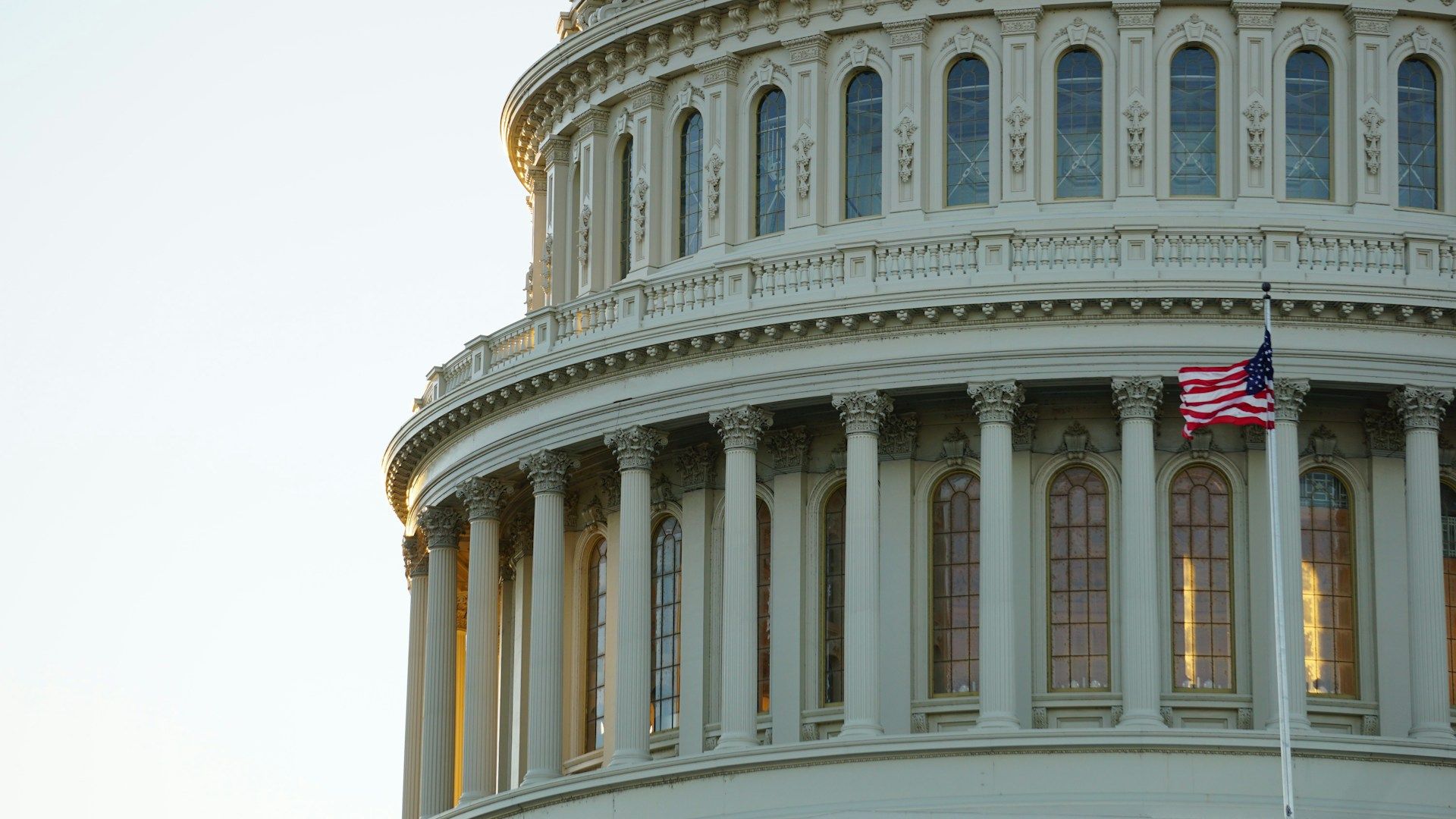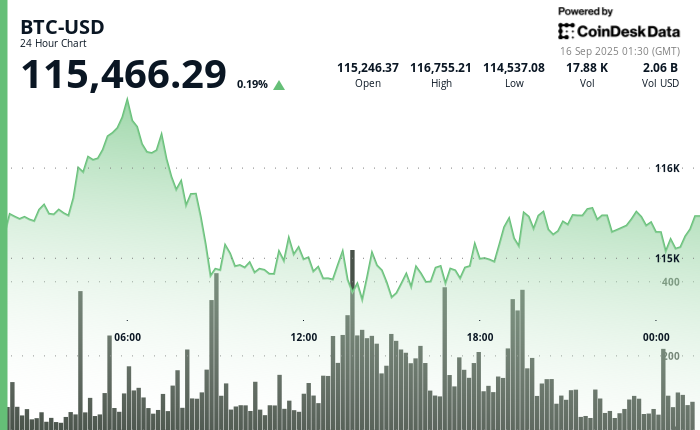Uncategorized
Democrats Must Embrace Crypto: Terry McAuliffe

As a lifelong Democrat and former Governor of Virginia, I’ve always believed our party should be on the side of growth, innovation, and economic opportunity. That’s why I’m concerned that too many Democrats are standing on the sidelines or standing in the way of one of the most transformative financial innovations of our time: blockchain and cryptocurrency.
Blockchain and crypto are already driving job creation across the country, from data centers and fintech startups to cybersecurity firms and developers working on decentralized infrastructure. This technology means more jobs, higher wages, and more money in people’s pockets, especially in communities that have been left behind by the traditional financial system.
The numbers don’t lie. Voters overwhelmingly support integrating crypto into the American financial system. More than two-thirds of Americans believe there should be clearer rules and regulations for the crypto industry, rather than leaving it largely unregulated, according to multiple industry-leading public opinion polls.
And two-thirds believe the current global financial system favors powerful interests and not them. Democrats need to understand that voters want an alternative to the current financial system that provides them with the economic freedom that is so desperately needed. That is a winning middle class message.
These numbers reflect a clear mandate for action. Yet our party’s leadership has often approached crypto with skepticism or outright hostility, creating a partisan divide on an innovation that should transcend political boundaries.
This misalignment became painfully evident during recent elections, with Republicans, including Donald Trump, having embraced crypto, while Democrats appeared out of touch with the technological revolution reshaping our economy. We cannot afford to cede this ground, especially when crypto and blockchain offer solutions to many of the economic challenges we’ve long sought to address.
The Democratic Party has always stood for expanding economic opportunity and ensuring that working people aren’t taken advantage of by powerful financial institutions. As a lifelong entrepreneur and Virginia’s former governor, I’ve seen how embracing innovation can open doors for workers, businesses, and families across every corner of our economy. Cryptocurrency and blockchain technology are no exception—they offer real tools to increase financial inclusion, expand access, and create good-paying jobs.
This isn’t just theory, it is what voters are telling us. Communities of color and younger Americans, especially young men, see real promise in crypto as a path to economic empowerment. These are core Democratic constituencies, and they’ll be essential to winning back the map in 2028 and beyond. If we want to remain the party of opportunity, we have to lead the way on forward-looking regulation—not stand in the way of progress.
Innovation in crypto means financial services for communities traditionally underserved by conventional banking systems, offering faster, cheaper transactions and broader access to capital. For minority communities, in particular, who have historically faced discrimination in traditional banking, crypto represents a path to financial empowerment through self-custody and consumer choice. Small businesses should not have to pay 3, 4 or 5% of their profits to companies when transactions can be done at a fraction of the cost. Crypto will create a system of payment that benefits consumers and small businesses everywhere.
Now, we have a crucial opportunity to correct our course. The GENIUS Act, which now awaits action in the House, presents a framework for smart, progressive regulation positioning America as a global leader in stablecoins.
Stablecoins are crypto tokens backed by U.S. dollars held in a bank that provide a cheaper and faster way of moving dollars than the dated ACH system. This legislation offers a balanced approach that both nurtures innovation, strengthens the U.S. dollar and establishes necessary guardrails.
The GENIUS Act’s provisions will streamline our financial system and eliminate costly fees that disproportionately affect small businesses and low-income Americans. It will mean Americans can send money to family abroad in milliseconds, for fractions of a penny, using dollar backed stablecoins like USDC on lightning-fast public blockchains like Solana. This is exactly the kind of forward-thinking policy that Democrats should be championing; it’s about creating a more accessible, efficient, and equitable financial system for all Americans.
Our party’s current stance isn’t just out of step with innovation—it’s out of step with the very voters we need to win. Across the country, growing numbers of Americans—especially younger voters and communities of color—see cryptocurrency as a pathway to financial opportunity and economic inclusion. These are the same voters who have long formed the backbone of the Democratic coalition. If we continue to treat this technology with suspicion rather than vision, we risk pushing away the very people we should be fighting for—not just in the next election, but for years to come.
The path forward is clear. House Democrats must embrace crypto regulation that balances innovation with consumer protection. The GENIUS Act provides this framework for stablecoins, offering an opportunity to demonstrate our commitment to fairness and financial inclusion.
This isn’t just about winning elections – though that matters – it’s about ensuring America leads the next generation of innovation and creates a platform for Americans to own their financial future. At the dawn of the internet era, the United States led the way with innovation friendly regulation and because of that we are home to nearly every major player in the online industry. Today, other nations are moving quickly to establish themselves as crypto hubs. We can either help shape this future or let the next Silicon Valley be built overseas.
For Democrats, this is a moment of choice. We can continue down our current path of skepticism and resistance, or we can embrace the transformative potential of cryptocurrency while ensuring it develops in alignment with our values of fairness, inclusion, and innovation.
The time has come for Democrats to lead the way on crypto policy. Our party’s future – and America’s competitive edge in the global financial system – may depend on it.
Uncategorized
Asia Morning Briefing: Fragility or Back on Track? BTC Holds the Line at $115K

Good Morning, Asia. Here’s what’s making news in the markets:
Welcome to Asia Morning Briefing, a daily summary of top stories during U.S. hours and an overview of market moves and analysis. For a detailed overview of U.S. markets, see CoinDesk’s Crypto Daybook Americas.
Bitcoin (BTC) traded just above $115k in Asia Tuesday morning, slipping slightly after a strong start to the week.
The modest pullback followed a run of inflows into U.S. spot ETFs and lingering optimism that the Federal Reserve will cut rates next week. The moves left traders divided: is this recovery built on fragile foundations, or is crypto firmly back on track after last week’s CPI-driven jitters?
That debate is playing out across research desks. Glassnode’s weekly pulse emphasizes fragility. While ETF inflows surged nearly 200% last week and futures open interest jumped, the underlying spot market looks weak.
Buying conviction remains shallow, Glassnode writes, funding rates have softened, and profit-taking is on the rise with more than 92% of supply in profit.
Options traders have also scaled back downside hedges, pushing volatility spreads lower, which Glassnode warns leaves the market exposed if risk returns. The core message: ETFs and futures are supporting the rally, but without stronger spot flows, BTC remains vulnerable.
QCP takes the other side.
The Singapore-based desk says crypto is “back on track” after CPI confirmed tariff-led inflation without major surprises. They highlight five consecutive days of sizeable BTC ETF inflows, ETH’s biggest inflow in two weeks, and strength in XRP and SOL even after ETF delays.
Traders, they argue, are interpreting regulatory postponements as inevitability rather than rejection. With the Altcoin Season Index at a 90-day high, QCP sees BTC consolidation above $115k as the launchpad for rotation into higher-beta assets.
The divide underscores how Bitcoin’s current range near $115k–$116k is a battleground. Glassnode calls it fragile optimism; QCP calls it momentum. Which side is right may depend on whether ETF inflows keep offsetting profit-taking in the weeks ahead.

Market Movement
BTC: Bitcoin is consolidating near the $115,000 level as traders square positions ahead of expected U.S. Fed policy moves; institutional demand via spot Bitcoin ETFs is supporting upside
ETH: ETH is trading near $4500 in a key resistance band; gains are being helped by renewed institutional demand, tightening supply (exchange outflows), and positive technical setups.
Gold: Gold continues to hold near record highs, underpinned by expectations of Fed interest rate cuts, inflation risk, and investor demand for safe havens; gains tempered somewhat by profit‑taking and a firmer U.S. dollar
Nikkei 225: Japan’s Nikkei 225 topped 45,000 for the first time Monday, leading Asia-Pacific gains as upbeat U.S.-China trade talks and a TikTok divestment framework lifted sentiment.
S&P 500: The S&P 500 rose 0.5% to close above 6,600 for the first time on Monday as upbeat U.S.-China trade talks and anticipation of a Fed meeting lifted stocks.
Elsewhere in Crypto
Uncategorized
Wall Street Bank Citigroup Sees Ether Falling to $4,300 by Year-End

Wall Street giant Citigroup (C) has launched new ether (ETH) forecasts, calling for $4,300 by year-end, which would be a decline from the current $4,515.
That’s the base case though. The bank’s full assessment is wide enough to drive an army regiment through, with the bull case being $6,400 and the bear case $2,200.
The bank analysts said network activity remains the key driver of ether’s value, but much of the recent growth has been on layer-2s, where value “pass-through” to Ethereum’s base layer is unclear.
Citi assumes just 30% of layer-2 activity contributes to ether’s valuation, putting current prices above its activity-based model, likely due to strong inflows and excitement around tokenization and stablecoins.
A layer 1 network is the base layer, or the underlying infrastructure of a blockchain. Layer 2 refers to a set of off-chain systems or separate blockchains built on top of layer 1s.
Exchange-traded fund (ETF) flows, though smaller than bitcoin’s (BTC), have a bigger price impact per dollar, but Citi expects them to remain limited given ether’s smaller market cap and lower visibility with new investors.
Macro factors are seen adding only modest support. With equities already near the bank’s S&P 500 6,600 target, the analysts do not expect major upside from risk assets.
Read more: Ether Bigger Beneficiary of Digital Asset Treasuries Than Bitcoin or Solana: StanChart
Uncategorized
XLM Sees Heavy Volatility as Institutional Selling Weighs on Price

Stellar’s XLM token endured sharp swings over the past 24 hours, tumbling 3% as institutional selling pressure dominated order books. The asset declined from $0.39 to $0.38 between September 14 at 15:00 and September 15 at 14:00, with trading volumes peaking at 101.32 million—nearly triple its 24-hour average. The heaviest liquidation struck during the morning hours of September 15, when XLM collapsed from $0.395 to $0.376 within two hours, establishing $0.395 as firm resistance while tentative support formed near $0.375.
Despite the broader downtrend, intraday action highlighted moments of resilience. From 13:15 to 14:14 on September 15, XLM staged a brief recovery, jumping from $0.378 to a session high of $0.383 before closing the hour at $0.380. Trading volume surged above 10 million units during this window, with 3.45 million changing hands in a single minute as bulls attempted to push past resistance. While sellers capped momentum, the consolidation zone around $0.380–$0.381 now represents a potential support base.
Market dynamics suggest distribution patterns consistent with institutional profit-taking. The persistent supply overhead has reinforced resistance at $0.395, where repeated rally attempts have failed, while the emergence of support near $0.375 reflects opportunistic buying during liquidation waves. For traders, the $0.375–$0.395 band has become the key battleground that will define near-term direction.

Technical Indicators
- XLM retreated 3% from $0.39 to $0.38 during the previous 24-hours from 14 September 15:00 to 15 September 14:00.
- Trading volume peaked at 101.32 million during the 08:00 hour, nearly triple the 24-hour average of 24.47 million.
- Strong resistance established around $0.395 level during morning selloff.
- Key support emerged near $0.375 where buying interest materialized.
- Price range of $0.019 representing 5% volatility between peak and trough.
- Recovery attempts reached $0.383 by 13:00 before encountering selling pressure.
- Consolidation pattern formed around $0.380-$0.381 zone suggesting new support level.
Disclaimer: Parts of this article were generated with the assistance from AI tools and reviewed by our editorial team to ensure accuracy and adherence to our standards. For more information, see CoinDesk’s full AI Policy.
-

 Business11 месяцев ago
Business11 месяцев ago3 Ways to make your business presentation more relatable
-

 Fashion11 месяцев ago
Fashion11 месяцев agoAccording to Dior Couture, this taboo fashion accessory is back
-

 Entertainment11 месяцев ago
Entertainment11 месяцев ago10 Artists who retired from music and made a comeback
-

 Entertainment11 месяцев ago
Entertainment11 месяцев ago\’Better Call Saul\’ has been renewed for a fourth season
-

 Entertainment11 месяцев ago
Entertainment11 месяцев agoNew Season 8 Walking Dead trailer flashes forward in time
-

 Business11 месяцев ago
Business11 месяцев ago15 Habits that could be hurting your business relationships
-

 Entertainment11 месяцев ago
Entertainment11 месяцев agoMeet Superman\’s grandfather in new trailer for Krypton
-

 Entertainment11 месяцев ago
Entertainment11 месяцев agoDisney\’s live-action Aladdin finally finds its stars





